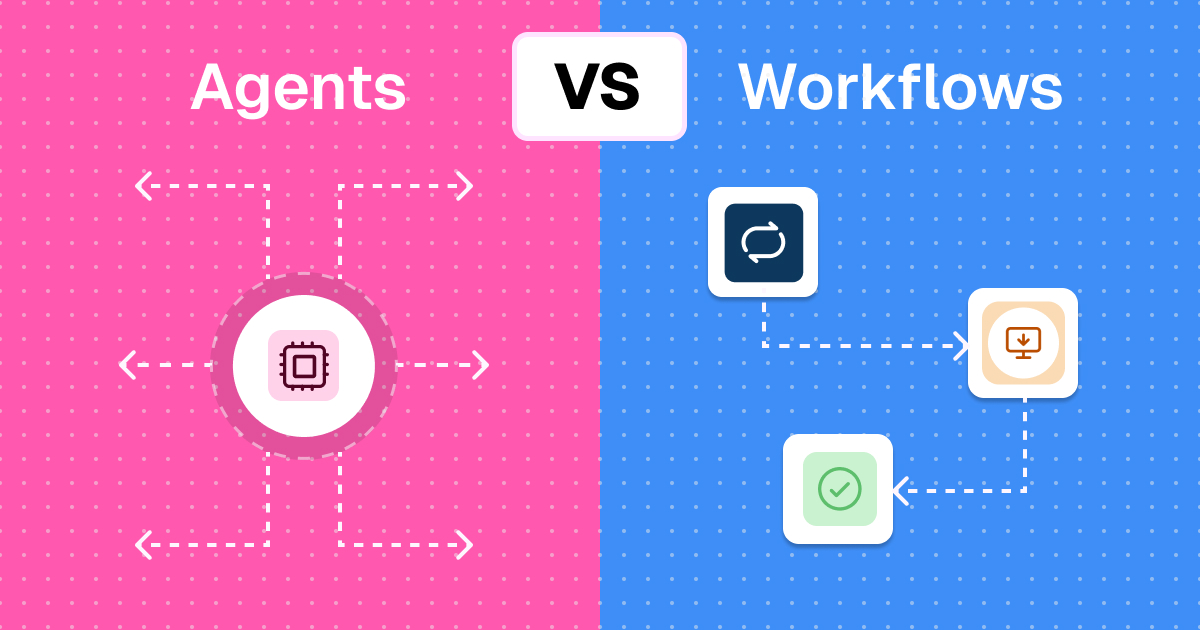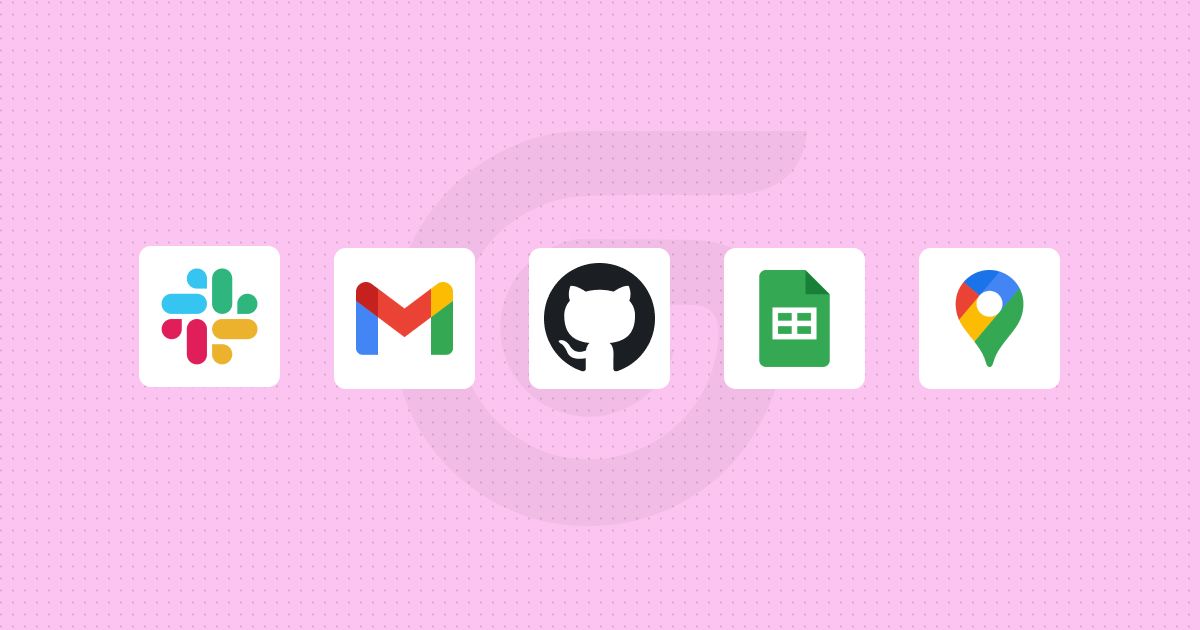AI Workflows vs AI Agents

Want to successfully adopt AI in your company? First, you first need to understand the difference between AI workflows and AI agents.
The single most common point of confusion we see is the difference between AI Agents vs AI Workflows.
The two concepts get conflated on social media when people are posting sensationalized use cases but they’re very different.
A Quarterback vs a Play
I like to use the football analogy that while agents are quarterbacks, workflows are pre-set plays.
Workflows are the pre-planned, reliable executable routes. Each workflow/play serves its purpose in different scenarios, they’re predictable and rigid in structure.
Agents are the decision-making layer on top of powerful workflows. Agents/quarterbacks can think for themselves based on their environment, they can decide what play to run (if any play at all) and are coordinating their efforts of moving towards the end zone.
No quarterback would be useful without a playbook. No play would be that useful on its own, without being used with proper timing and context.
During the first wave of AI, many AI startups started by working on agents without the underlying workflows/tools that make them useful. More often than not, they massively disappointed their users. They were trying to put quarterbacks on the field without having built a playbook, which caused a mess of confusion and poorly executed routes.
Here are some examples of workflows:
- Open source repo hunter: A flow that takes in the link of an open source repository, scrapes all the top contributors, filters out bots, runs deep research on top contributors, determines the most hireable people, emails you a report.
- Stale Salesforce reassigner: A flow that runs through all open opportunities in Salesforce, and checks they have recent updates. If they don’t, assign opportunities to a rep, and send the rep an email letting them know about the opportunities they've been assigned.
- Marketplace checker: A flow that iterates through all items users have submitted to your marketplace, checks the images with AI to ensure they’re not violating any terms and compares the listing description to the image. All violations are flagged in a Google Sheet.
Here are some examples of agents:
- Hiring agent: an agent armed with Apollo MCP (to find candidate emails), Perplexity (to research topics), Gmail MCP (to send emails), Ashby MCP (to search candidates), and the open source contributor hunter workflow listed above. Chat with the agent so it can leverage these tools to help you hire effectively.
- Sales manager agent: an agent armed with Gong MCP, Google Docs MCP, Salesforce MCP, and the stale Salesforce reassigner workflow mentioned above. Chat with it whenever you need help managing your sales team.
- Trust and safety agent: an agent armed with web scraping, internal company policy docs, Gmail MCP (to dispatch warnings and responses to users), and the marketplace checker mentioned above to audit all new submissions. The whole trust and safety team can interact with this agent to manage submissions.
What Is an AI workflow?
A workflow is a pre-defined series of steps that exists to achieve a goal.
Workflows normally:
- Have a start and end
- Have a set of defined inputs and outputs
- Have predictable paths of execution
- Can be run at scale (thousands or millions of times reliably)
- Only use AI wherever absolutely necessary
Workflows are great because they’re reliable, cost-effective and 100% configurable. The creator of the workflow has total control over every step. If you were to run it millions of times, you’d be able to walk away confident with the fact that it’ll work, because it’s a mostly deterministic system.
What Is an AI Agent?
Agents are AI-powered reasoning engines that can use tools to solve open-ended tasks.
Agents normally:
- Don’t have a defined ‘start or end’
- Can solve the same problem in different ways
- Use tools to accomplish tasks
- Can run for undetermined periods of time
Agents are much more flexible and can handle open-ended tasks. They will ingest the problem (normally a prompt or some sort of event) and make sense of how to address it given the context at hand and the tools provided.
Agents and Tools
One term that is mentioned often is the concept of ‘tools’ for AI agents. Tools are exactly what they sound like: tools that the agent can use whenever it sees fit.
In the same way a carpenter would turn to their saw to cut a floorboard, and a hammer to nail it to the ground, an agent will determine what tools it can use and try to use the best one for every task.
An agent is only as useful as the tools it has access to. Similar to the carpenter showing up to the job site with no gear, without tools nothing will get done.
Workflows are Just Complex Tools
To the agent, the complexity of the tools it can use doesn’t matter. It simply ‘calls’ the tool and waits to get a response so it can keep reasoning. An AI agent’s tool can be something as simple as reading a Slack channel (normally through MCP) or something as complex as an entire 40-step AI workflow.
Loading an agent with workflows as tools is a tremendously powerful way to equip them for work. The user is in charge of converting their tasks into reliable workflows (designing the play) and then handing it to the quarterback to use whenever necessary.
When to Use Agents vs Workflows
Start with workflows, graduate to agents.
If you only have workflows, and no agent to unify them, YOU are the agent. You are the entity reasoning through problems, determining when to run workflows.
Being the agent yourself gives you a wonderful amount of context about what the task is that you’re really trying to have AI do. This is essentially what having a job is. You have a general goal, a bunch of inputs from your environment and you’re constantly figuring out which workflow to do to achieve that goal.
Once you automate the workflows, adding an agent on top of it for orchestration is the logical next step. Take yourself out of the equation and focus on the work that AI can’t do.
Read related articles
Check out more articles on the Gumloop blog.
Create automations
you're proud of
Start automating for free in 30 seconds — then scale your
superhuman capabilities without limits.




















.webp)